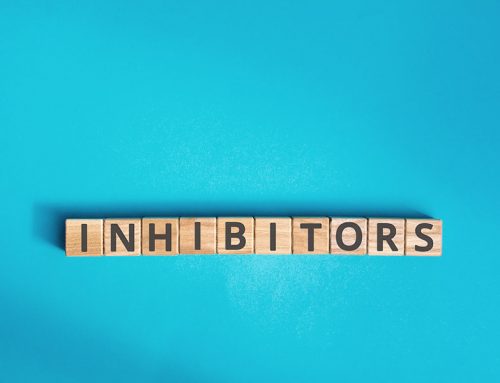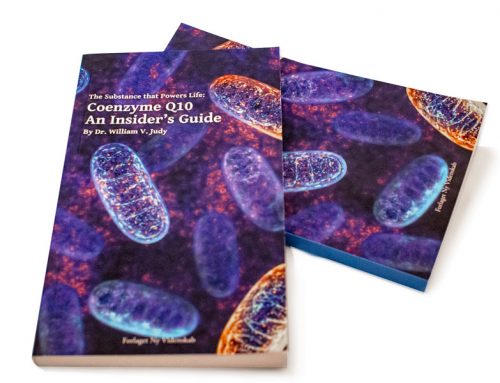
Dr. Urban Alehagen, Linköping University, Sweden. Lead researcher on the KiSel-10 study and one of the primary researchers on the Q-Symbio study.
Dr. Urban Alehagen, Department of Cardiology, Linköping University, Sweden, and Dr. Jan Aaseth, Department of Medicine, Innlandet Hospital Trust, Norway, have published a clinician’s point of view on the important interrelationship between Coenzyme Q10 and selenium in the prevention and treatment of heart disease. They know that selenium deficiencies can inhibit the cells from getting optimal concentrations of Coenzyme Q10. Furthermore, they know that adequate concentrations of Q10 are needed for the cells to benefit from optimal selenium function. Let’s see why this is important.
Selenium functions in the body
Selenium is a trace element that is involved in the functioning of the immune system. It is a component of such important antioxidant enzymes in the body as the glutathione peroxidases, the thioredoxin reductases, and the iodothyronine deiodinases as well as a component of some 30 or more selenoproteins.
The primary function of the selenium containing antioxidant enzymes is to protect the cells against oxidative damage. Oxidative stress is defined as an imbalance in the body between the number of harmful free radicals and the number of protective antioxidants. Selenoproteins are an essential element of the cells’ antioxidant defense system.
Selenium protects against oxidative stress
Among other things, oxidative stress damages the endothelial cells of the blood vessels and increases the risk of atherosclerosis, hypertension, and chronic heart failure. The endothelium is the layer of cells lining the inside of blood vessels. Good endothelial function is especially important in the prevention of heart disease because it is on the cells of the endothelium that deposits of fatty materials can build up and partially or completely block the flow of blood.
Coenzyme Q10 functions in the body
First of all, Coenzyme Q10 plays a central role in the cells’ production of ATP, the basic chemical unit of energy in the body. Secondly, Coenzyme Q10 also acts as a powerful antioxidant protecting against lipid peroxidation. Lipid peroxidation is the process by which harmful free radicals steal electrons from lipids in the cells and thus cause cell damage.
Positive effects of Coenzyme Q10 on endothelial function
In addition to its role in cellular bio-energetics and antioxidant activity, Coenzyme Q10 has a positive effect on endothelial function. In other words, supplementation with Coenzyme Q10 helps to inhibit the development of atherosclerosis and chronic heart failure.
Low levels of Coenzyme Q10 and selenium associated with heart failure
Patients diagnosed with heart failure (the inability of the heart to pump sufficient amounts of blood containing oxygen and nutrients out to the body) have significantly lower blood and heart muscle tissue levels of Coenzyme Q10 than people without heart failure. In the same way, patients diagnosed with heart failure have been shown to have lower blood selenium concentrations than healthy people do.
Limits on the bio-availability of selenium and Coenzyme Q10
The human body does not produce selenium. Its intake in the diet varies regionally according to its availability in the soil and in the crops and foodstuffs. In particular, regions in China, in northern Europe (including all of the Nordic countries and the United Kingdom), and in New Zealand are characterized by low selenium intakes.
Humans do biosynthesize Coenzyme Q10, but, typically, the body’s production of the substance peaks in a person’s 20s and then begins to decline with increasing age. Moreover, it is well established that statin medications, designed to inhibit the body’s production of cholesterol, also inhibit the body’s production of Coenzyme Q10. The body uses the same biological pathway to produce both substances, cholesterol and Coenzyme Q10.
For good heart health, persons above the age of 40 – 45 years and patients taking statin medications should be taking a well-formulated Coenzyme Q10 supplement.

Dr. Bodo Kuklinski, Rostock, Germany. One of the first clinicians to realize the special interrelationship between selenium and Coenzyme Q10 in the prevention and treatment of heart disease.
The research literature about selenium and Coenzyme Q10
Kuklinski 1994
In an early randomized study (1994), Dr. Bodo Kuklinski, director of the Diagnostic and Therapeutic Center for Environmental Medicine in Rostock, Germany, showed that treatment of heart attack patients with selenium and Coenzyme Q10 improved survival and symptoms but at levels that did not quite reach statistical significance. Clinically, however, the results were encouraging.
Witte study 2005
In 2005, Dr. Klaus Witte and colleagues from the Castle Hill Hospital in Hull, United Kingdom, reported the results of a randomized controlled trial in which supplementation with Coenzyme Q10 and selenium and other micronutrients yielded significantly lower left ventricle volume, higher left ventricle ejection fraction, and improved quality of life for elderly heart failure patients.
Leong study 2010
Then, in 2010, Dr. James Leong and Dr. Franklin L. Rosenfeldt of the Department of Surgery at Monash University in Melbourne, Australia, reported on the significant effects of supplementing heart bypass patients with selenium, Coenzyme Q10, and other micronutrients for up to two months prior to surgery and for one month following surgery. The results of the supplementation, as compared with placebo, were less cardiac damage and shorter post-operation hospital stays.
Selenium and Coenzyme for healthy elderly people
In the KiSel-10 study, Dr. Alehagen and his colleagues at Linkøping University in Sweden tested the effects of supplementation of elderly Swedish citizens, average age 78 years, who were living at home (not institutionalized), with 200 micrograms of the organic selenium SelenoPrecise daily and with 200 milligrams of Bio-Quinone Q10 (100 mg twice daily). The researchers enrolled 443 participants and randomly assigned them to an active treatment group or to a placebo group for a period of four years.
The following results of the KiSel-10 supplementation were statistically significant:
- A reduction in cardiovascular deaths
- A reduction in the levels biological markers for heart disease
- Better cardiac function scores on echocardiograms
- Fewer and shorter hospitalizations
- Better quality of life
The clinician’s conclusion
Oxidative stress – attacks on the cells by harmful free radicals – is always a danger, but it is especially so in the following circumstances:
- with increasing age
- with vulnerability to atherosclerosis or inflammatory disease
- with the taking of statin medications
- with the need to undergo surgery
The body needs adequate levels of selenium and Coenzyme Q10 to meet the requirements for increased antioxidative capacity.
Sources:
- Alehagen, U., Johansson, P., Björnstedt, M., Rosén, A., & Dahlström, U. (2013). Cardiovascular mortality and N-terminal-proBNP reduced after combined selenium and coenzyme Q10 supplementation: a 5-year prospective randomized double-blind placebo-controlled trial among elderly Swedish citizens. International Journal of Cardiology, 167(5), 1860-1866.
- Kalén, A., Appelkvist, E. L., & Dallner, G. (1989). Age-related changes in the lipid compositions of rat and human tissues. Lipids, 24(7), 579-584.
- Kuklinski, B., Weissenbacher, E., & Fähnrich, A. (1994). Coenzyme Q10 and antioxidants in acute myocardial infarction. Molecular Aspects of Medicine, 15 Suppls143-s147.
- Leong, J., van der Merwe, J., Pepe, S., Bailey, M., Perkins, A., Lymbury, R., & Rosenfeldt, F. (2010). Perioperative metabolic therapy improves redox status and outcomes in cardiac surgery patients: a randomised trial. Heart, Lung & Circulation, 19(10), 584-591.
- Witte, K. A., Nikitin, N. P., Parker, A. C., von Haehling, S., Volk, H., Anker, S. D., & … Cleland, J. F. (2005). The effect of micronutrient supplementation on quality-of-life and left ventricular function in elderly patients with chronic heart failure. European Heart Journal, 26(21), 2238-2244.









[…] better heart function in healthy elderly adults (in combination with selenium supplementation and compared to placebo […]